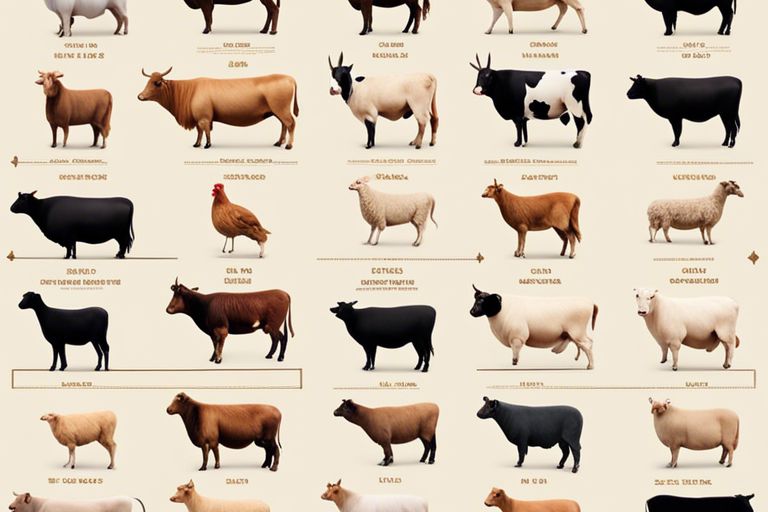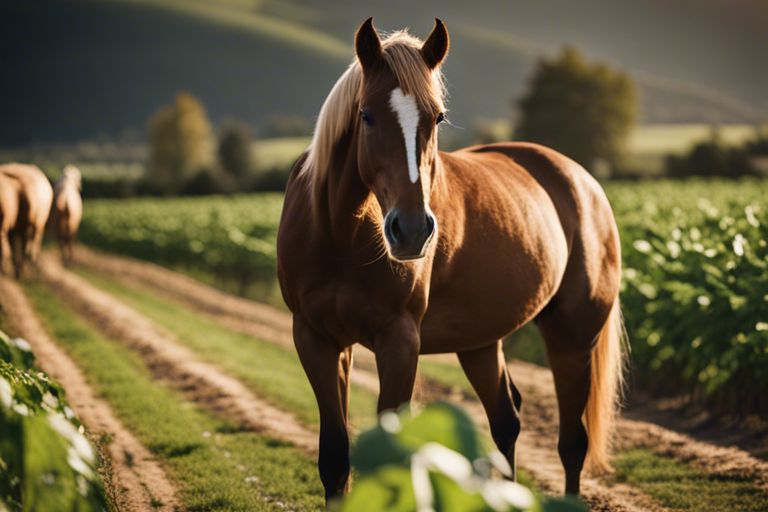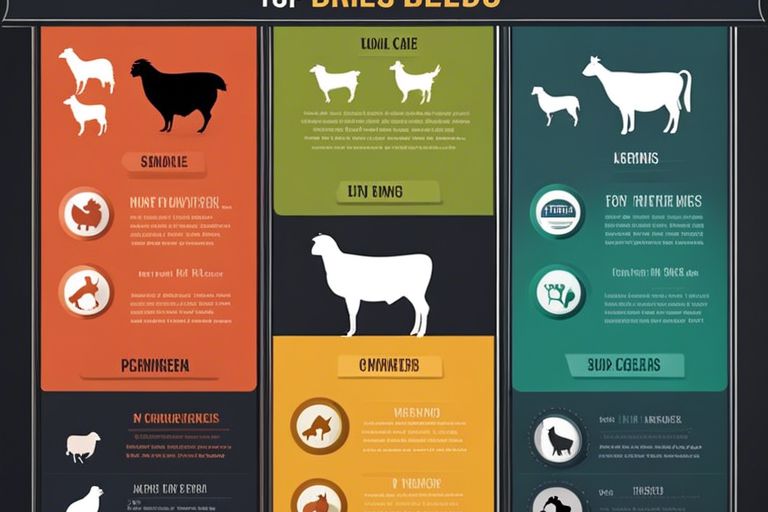This comprehensive guide is designed to help beginners learn how to identify different livestock breeds. Understanding the various characteristics and features of different breeds is necessary for farmers, agriculture enthusiasts, or anyone interested in livestock. By familiarizing yourself with the distinct traits of each breed, you can make informed decisions when it comes to breeding, purchasing, or caring for livestock. This guide will provide you with valuable insights and tips on how to recognize and differentiate between common livestock breeds, empowering you to confidently navigate the world of livestock farming.
Understanding Livestock Types
Your journey into recognizing livestock breeds begins with understanding the different types of animals commonly found on farms and ranches. This knowledge will help you distinguish between cattle, sheep, goats, swine, and poultry breeds. After familiarizing yourself with these types, you’ll be better equipped to identify specific breeds within each category.
| Cattle | Sheep |
| Goats | Swine |
| Poultry |
Cattle Breeds
With over 800 breeds of cattle worldwide, recognizing different types can be overwhelming. However, key features such as body size, coat color, and horn shape can help distinguish breeds like Angus, Hereford, and Holstein.
Sheep Breeds
Assuming the role of a novice livestock enthusiast, understanding sheep breeds is crucial. From Merino to Suffolk, each breed has distinct characteristics in terms of wool quality, body conformation, and purpose—whether for meat, wool, or both.
Another important factor to consider when learning about sheep breeds is their adaptability to different climates and terrain. Certain breeds thrive in specific environments, making them ideal for certain regions and farming practices.
Goat Breeds
Clearly recognizing goat breeds involves paying attention to their size, ear shape, and coat type. From the miniature Nigerian Dwarf to the large Boer goat, each breed serves unique purposes such as milk production, meat, or vegetation control.
Breeds with high milk production capabilities like Saanen and Alpine are popular among dairy farmers, while meat breeds like Kiko and Spanish are favored for their robustness and flavor.
Swine Breeds
Sheep Breeds encompass a diverse range of sizes, colors, and characteristics, including Hampshire, Duroc, and Berkshire. Each swine breed offers distinct advantages in terms of meat quality, feed conversion efficiency, and adaptability to various production systems.
Breeds known for their marbling like Berkshire are prized in the culinary world, while breeds like Landrace excel in reproduction efficiency, making them valuable for commercial pig farming.
Poultry Breeds
Bacon and eggs wouldn’t be the same without the diverse poultry breeds that contribute to our meals. From the Rhode Island Red for brown eggs to the Cornish Cross for meat production, each breed brings something unique to the table.
A solid understanding of poultry breeds will help you select the right birds for your farming goals, whether it’s egg production, meat quality, or ornamental purposes.
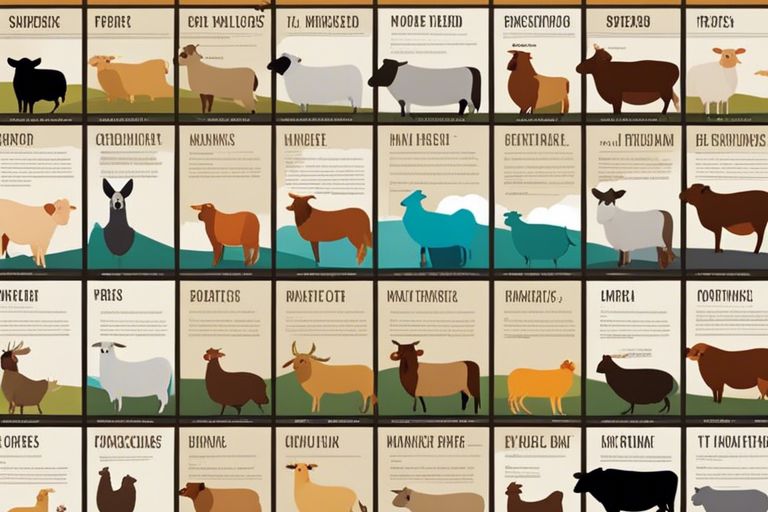
Step-by-Step Guide to Identifying Livestock Breeds
| Physical Characteristics and Features | Behaviors and Temperament |
Identifying Physical Characteristics and FeaturesWhen identifying livestock breeds, consider physical characteristics such as size, shape, horn shape, coat texture, and ear shape. These features can vary widely between different breeds and can help in distinguishing one breed from another. |
Characteristics Behaviors and TemperamentUnderstanding a breed’s typical behaviors and temperament is crucial in breed identification. Some breeds may be docile and friendly, while others can be more aggressive or have specific herding instincts. Observing how animals interact with each other and with humans can provide valuable clues. |
Breed-Specific Markings and Color Patterns
When identifying livestock breeds, pay close attention to their breed-specific markings and color patterns. These can include unique facial markings, body coloration, and pattern variations such as spots or stripes. Familiarize yourself with the standard colorations of different breeds to help narrow down the possibilities.
With a keen eye for detail and a solid understanding of breed characteristics, behaviors, and color patterns, you will be well equipped to confidently identify various livestock breeds.
Factors Influencing Breed Identification
All livestock breeds have specific characteristics that help in their identification. These distinguishing traits are influenced by various factors, making it imperative for livestock enthusiasts to understand the key aspects that play a role in identifying different breeds.
Regional Popularity and Climate Adaptations
Some livestock breeds are more popular in certain regions due to their ability to thrive in specific climates. For example, cattle breeds like Angus are well-known for their adaptability to cold weather, making them popular in Northern regions. Understanding regional preferences and climate adaptations can help in identifying breeds accurately.
Historical Context and Origin of Breeds
Some livestock breeds have a long history that traces back to their origins. The historical context of a breed, including its development over time and the regions where it originated, can provide valuable insights into its unique characteristics. Recognizing the historical significance of different breeds can aid in their identification.
Factors such as breeding practices, geographic isolation, and the needs of local farmers have influenced the development of various livestock breeds. By understanding the historical context and origin of breeds, enthusiasts can gain a deeper appreciation for the diversity and significance of different livestock breeds.
Use and Application in Farming Practices
Application of different livestock breeds in farming practices is another crucial factor that influences breed identification. Some breeds are specifically bred for dairy production, while others are more suited for meat or wool production. Understanding the specific uses and applications of different breeds can help farmers optimize their farming practices and choose the most suitable breeds for their needs.
Influencing factors such as market demand, agricultural practices, and economic considerations play a significant role in determining the use and application of different livestock breeds in farming practices. By considering these factors, farmers can make informed decisions about which breeds to select for their livestock operations.
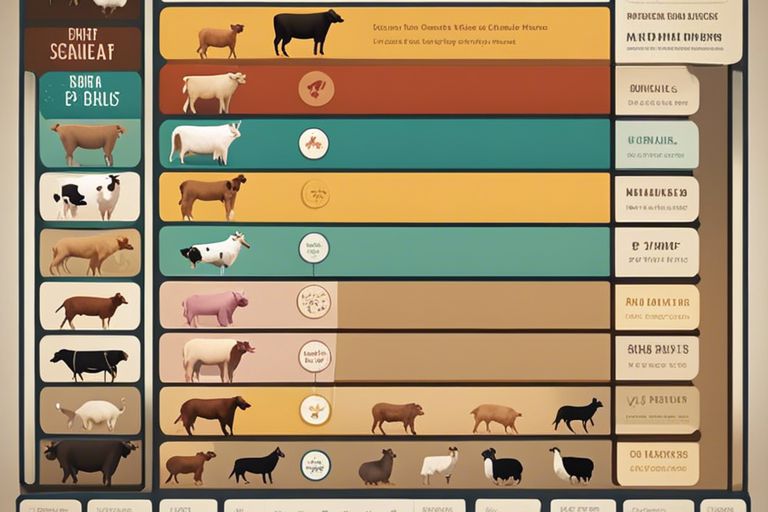
Evaluating Pros and Cons of Different Livestock Breeds
| Pros | Cons |
| High productivity and fast growth | Expensive to maintain |
| Good health and disease resistance | Require specialized care |
| Adaptability to different climates | Low market demand |
Productivity and Economic Viability
Any livestock breed you choose should be evaluated based on its productivity and economic viability. Some breeds may offer high productivity and fast growth, making them economically viable. However, keep in mind that these breeds could be expensive to maintain in the long run.
Health and Maintenance Requirements
Even though a breed may seem appealing in terms of productivity, it is necessary to consider its health and maintenance requirements. Some breeds may have good health and disease resistance, but they could also require specialized care which can be time-consuming and costly.
Maintenance: Livestock breeds with specific health needs must be properly cared for, requiring regular veterinary check-ups, vaccinations, and appropriate nutrition.
Suitability for Beginners
For beginners in livestock raising, choosing a breed that is suitable for your level of experience is crucial. Some breeds are more forgiving of mistakes and easier to handle, making them ideal choices for novices.
Requirements: Beginners should opt for breeds that are low maintenance, with straightforward care needs and a good temperament. This will help build confidence and ensure a positive experience in livestock rearing.
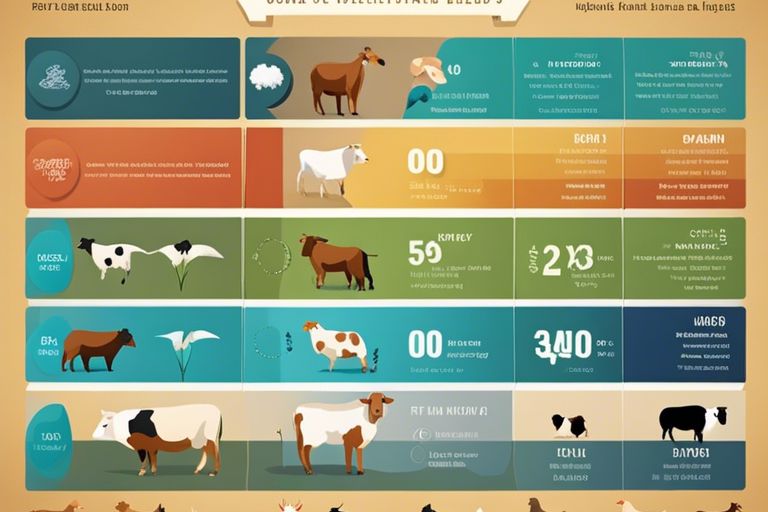
Tips for Beginners
Keep in mind that recognizing livestock breeds can be challenging for beginners, but with the right tools and information, you can learn quickly. After gaining some experience and knowledge, you will be able to identify various breeds with confidence.
Utilizing Breed Registries and Associations
Tips: One of the best ways to learn about different livestock breeds is by utilizing breed registries and associations. These organizations provide valuable information about breed standards, characteristics, and history. By studying their resources and connecting with breed enthusiasts, you can expand your knowledge and improve your breed recognition skills.
Attending Shows and Educational Events
Associations: Attending livestock shows and educational events is another excellent way for beginners to learn about different breeds. These events often feature various breeds on display, along with breed experts who can provide valuable insights and information. Take advantage of these opportunities to observe different breeds up close and learn from experienced breeders.
Building a Network with Experienced Breeders
Assuming you are serious about learning to recognize livestock breeds, building a network with experienced breeders can be invaluable. These seasoned individuals have a wealth of knowledge and practical insights that can help you in your breed recognition journey. By establishing relationships with experienced breeders, you can gain mentorship, guidance, and access to valuable resources.
Registries: Breed registries are vital resources for beginners looking to deepen their understanding of livestock breeds. These organizations maintain detailed records of breed standards, pedigrees, and breed characteristics. By studying these records and connecting with breed registry officials, you can enhance your breed recognition skills and become more proficient in identifying different livestock breeds.
Summing up
With these considerations in mind, it is clear that ‘A Beginner’s Guide To Recognizing Livestock Breeds’ serves as a comprehensive overview for anyone looking to identify and understand different livestock breeds. By providing key characteristics, historical background, and practical tips, this guide equips readers with the knowledge needed to differentiate between various breeds of cattle, sheep, pigs, and more. Whether you are a novice enthusiast or a seasoned farmer, this book offers valuable insights that can help enhance your livestock management skills and appreciation for the diverse world of animal breeds.
FAQ
Q: What is the importance of recognizing livestock breeds as a beginner?
A: Recognizing livestock breeds is crucial for beginners as it helps in proper identification, breeding decisions, and overall management of livestock.
Q: How can beginners differentiate between various livestock breeds?
A: Beginners can differentiate between livestock breeds by observing physical characteristics such as size, shape, color patterns, and horn structures.
Q: What are some common breeds of cattle that beginners should be familiar with?
A: Some common breeds of cattle that beginners should be familiar with include Hereford, Angus, Holstein, and Brahman.
Q: Why is it vital to understand the characteristics of different livestock breeds?
A: Understanding the characteristics of different livestock breeds helps beginners in making informed decisions regarding breeding, feeding, and housing requirements.
Q: How can beginners learn more about recognizing livestock breeds?
A: Beginners can learn more about recognizing livestock breeds through books, online resources, attending livestock shows, and interacting with experienced breeders.
Q: What are some key factors to consider while identifying sheep and goat breeds?
A: When identifying sheep and goat breeds, beginners should pay attention to fleece type, ear shape, horn presence, and body size.
Q: Is it important for beginners to seek guidance from experienced breeders when recognizing livestock breeds?
A: Yes, seeking guidance from experienced breeders is highly recommended for beginners as it provides valuable insights and practical tips on recognizing livestock breeds accurately.
